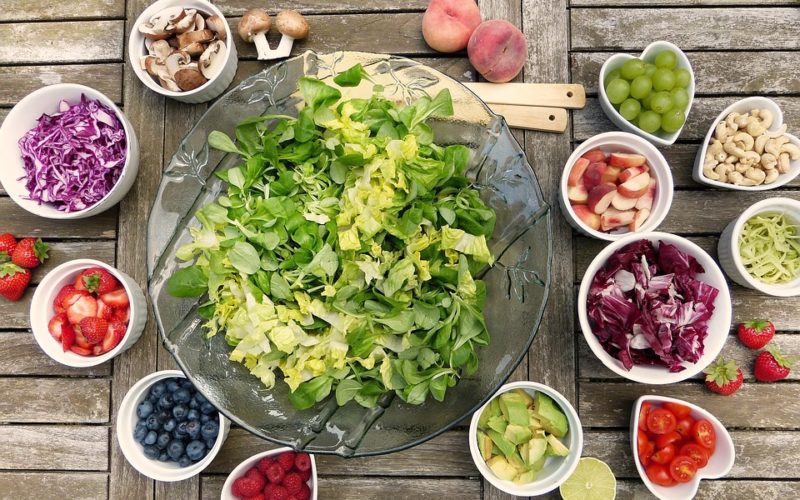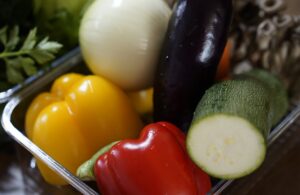Homegrown Vegetables
Growing your own vegetables can be a fun, healthy, and sustainable way to create a diet that is packed with natural and fresh flavours. With the world becoming increasingly busy and convenient options taking over our meals, more people are turning to growing their own vegetables in an effort to ensure they're still getting their fill of nutritious eats.
Not only does it provide you with the best tasting produce, there's nothing like biting into something right out of your garden but homegrown vegetables also provides untold benefits in terms of environmental sustainability and workplace wellness.
Start off small
Starting a vegetable or herb garden doesn't have to be an overwhelming task. Begin by selecting a few easy to grow options, such as tomatoes, eggplants, carrots, basil, oregano and lavender.
These plants will offer a great introduction to gardening, while still providing a sense of accomplishment when you harvest your crops. Research the planting requirements for each item so you can provide the right environment for healthy growth. Sunlight, soil type and nourishment are all important factors.
With basic knowledge plus dedication and care, your garden plot will soon be thriving with delicious vegetables and herbs.
Soil and location
If you want your plants to flourish, researching the optimum environment for their growth is essential. Choosing the right soil composition is one of the most important factors in successful plant cultivation; for instance, if you wish to grow tomatoes your best option would be loam soil, which is a mixture of sand and clay, or sterilised potting soil that doesn't contain any added nutrients and is therefore ideal for controlling nutrition levels.
As well as the right kind of soil, the amount of sunlight needed is specific to each type of plant. Many vegetables prefer a combination of both direct and indirect light while herbs thrive with direct sunlight only; it's a good idea to look into your chosen plants' particular needs in terms of lighting so you can provide them with the most appropriate environment.
Knowing what your plants need can result in a healthy and plentiful yield.
Planters or containers for growing your vegetables and herbs
Picking the right pots and planters for growing vegetables and herbs is an important step in ensuring healthy, happy plants. Pay attention to the size and shape of the container, as well as its material. Ceramic, plastic, or clay including drainage options.
Plants need room to spread their roots, so choose a pot that is just slightly larger than the plant's root ball width. Good drainage is also essential; make sure there are at least one or two small holes at the bottom for water to pass through easily.
Finally, consider using self watering containers if you forget to water your plants often, yet still want them to thrive.
When to sow and plant?
Planting vegetables and fruit can be a rewarding experience, with the right preparation. Knowing when to start planting vegetables and fruit, taking into account local weather patterns, is an essential step for successful growth.
For example, in cooler climates where spring may arrive late it is important to wait until the average temperatures are above 10 degrees Celsius before sowing vegetables such as tomatoes and peppers.
Additionally, in high altitude areas like the mountains it is advisable to wait until late April or even early May to avoid colder night time temperatures. When flowers are blooming in your area that indicates that they have acclimatised themselves with the local climate, so you can begin planting certain varieties accordingly.
With a little preparation and knowledge of both the vegetables and local weather conditions, you can easily ensure successful yields during the planting season.
Protect your plants from pests and diseases
Healthy vegetables and fruits can be difficult to come by, especially as various pests and diseases can literally eat up a garden's hard work. Keeping an eye out for these potential problems is essential for keeping vegetables and fruits in tip-top condition.
Familiarise yourself with the tell-tale signs of plant illness; wilting vegetables or discolouration of leaves can often be the first indication that something's amiss.
Investing in the appropriate protective clothing such as gloves and masks is also important when dealing with these pests and diseases, as many chickens, insects, fungi and bacteria can spread from one plant to another quickly.
Taking preventative measures like using fungicide on vegetables before planting them out, encouraging good air circulation between plants or picking off affected leaves are just some of the ways to protect your vegetables and fruit against unwanted intruders.
When to harvest your vegetables and herbs
Knowing when to harvest vegetables and herbs can make all the difference, as it is important that they be picked just as they reach their peak of ripeness. To maximise flavour, vegetables should have bright colours and crisp consistency, while herbs are at their best when the leaves are lush and fragrant.
Of course, many types of vegetables and herbs need to be picked before they become overripe, in these cases, look for signs like yellowing leaves or blooming flowers.
Vegetable plants also change composition depending on where you are in the season; for example, onions may require different harvesting techniques spring versus summer.
As a general rule of thumb, you should view each crop individually to determine whether it’s ready to go from your garden to your plate.

























